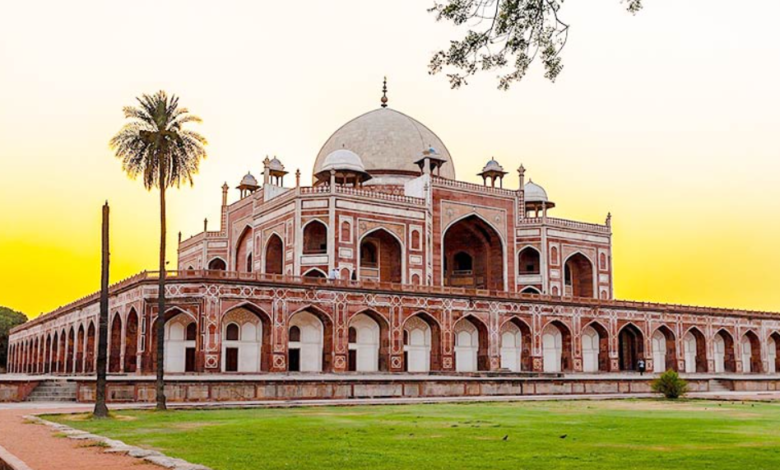List Of Delhi Sultanate Kings’ Tombs

For 320 years, the Delhi Sultanate, an Islamic Empire centered in Delhi, ruled over a sizable portion of the Indian peninsula (from 1206 to 1526). Here is a list of the most well-known tombs of Delhi Sultanate kings.
Qutubuddin Aibak tomb
The Slave Dynasty’s founding leader Qutubuddin Aibak’s tomb is located in Pakistan’s Lahore’s Anarkali Bazar. Aram Shah, the son of Qutubuddin Aibak, succeeded his father. Aram Shah’s rule lasted barely eight months despite the fact that he was swiftly found to be unfit for office due to resistance from the Turkish soldiers. Aram Shah was assassinated close to Delhi, but his grave is unknown.
Shams-ud-Din Iltutmish tomb
The first Muslim king to rule from Delhi was Shams-ud-Din Iltutmish, the third Mamluk ruler of the old Ghurid realms in northern India. Built-in 1235 AD, the tomb of Iltutmish is located close to the Qutub Minar, right outside the northwest corner of the Quwwat-ul-Islam. Its entryway is artistically carved with geometric and arabesque patterns, and it is a stunning representation of India’s cultural legacy.
Ruknuddin Firuz tomb
In 1236, for a little under seven months, Ruknuddin Firuz, also known as Rukn al-Din Firoz or Ruknuddin Feroz, served as the fourth Sultan of the Slave Dynasty (Delhi Sultanate). Following the passing of his father, Iltutmish, he came to the throne. Ruknuddin Firuz ruled the provinces of Badaun and Lahore as a prince. On November 19, 1236, he perished. The Sultan Ghari compound contains the tomb of Rukn-ud-Din Firuz, which is located in Delhi’s Mehrauli neighborhood. It was erected around 1236.
Razia Sultana Tomb
Raziyyat-Ud-Dunya The first and final woman to lead the Delhi Sultanate was Wa Ud-Din, also referred to as Razia Sultana. When Razia Sultana, the Iltutmish’s daughter, chose Yakut as the cavalry commander, she encountered resistance. Razia Sultan was murdered by Muizuddin Bahram Shah, the son of Iltutmish, as she was marrying Altunia to escape prison and recover the throne. Between 1236 and 1240, Razia Sultana ruled. Her burial is at Old Delhi’s Mohalla Bulbuli Khana, next to Turkman Gate.
Balban tomb
The tomb of Ghiyasuddin Balban, a Turk who ruled the Delhi Sultanate from 1266 to 1287 during the Mamluk dynasty, is located in Delhi’s Mehrauli Archaeological Complex, close to the Jamali Kamali mosque. The Mehrauli Archaeological Park is the name used presently.
Muhammad Bin Tughlaq Tomb
The Delhi Sultanate’s 18th Sultan, Muhammad bin Tughlaq, ruled from February 1325 until his passing in March 1351. He was Ghiyasuddin Tughlaq’s (the Tughlaq dynasty’s founder) oldest son. The ultimate resting site of Muhammad ibn Tughlaq lies close to Tughlaqabad Fort. Three graves—those of Ghiyasuddin Tughlaq, his wife, and his son Muhammad bin Tughlaq—are located inside the tomb.
Firoz Shah Tughlaq Tomb
In the Old Delhi neighborhood of Hauz Khas is where you may find Firoz Shah Tughlaq’s tomb. Firoz Shah was a sultan who had a significant interest in building and belonged to the Tughlaq dynasty of the Delhi Sultanate. He ruled Delhi between 1351 to 1388.
Alauddin Khilji tomb
The Alauddin Khalji tomb is located in the center of an L-shaped Madrasah’s southern wing in Delhi’s Qutub Minar complex. It is the first time in India that a tomb and madrasa have been combined. One of the Sultans of the Delhi Sultanate, Alauddin Khilji was the most powerful sultan of his dynasty.
Bahlol Lodi Tomb
The Lodi dynasty was started by Bahlul Khan Lodi, the leader of the Pashtun Lodi clan. On April 19, 1451, he has crowned the dynasty’s sultan. Chirag Delhi is where Bahlol Lodi’s tomb is located.
Ibrahim Lodi tomb
Ibrahim Lodi’s tomb is located at Panipat, Haryana. Ibrahim Lodi, who succeeded as Delhi’s Sultan in 1517, was also the last head of the Lodi dynasty.
News Mania Desk






